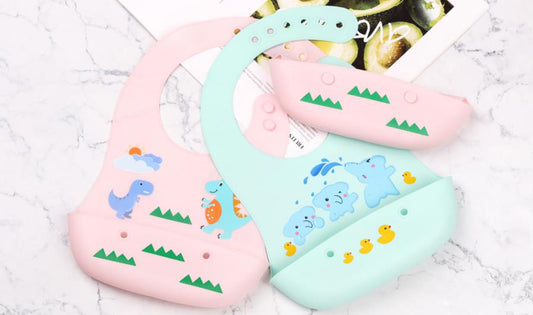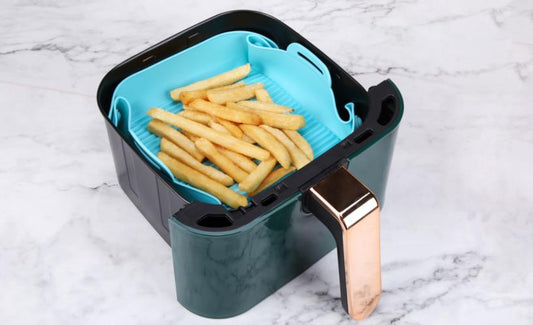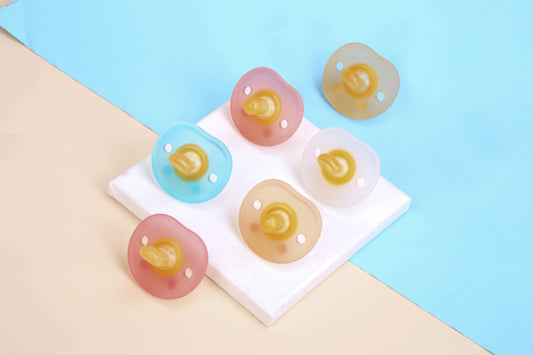Is silicone safe for cooking? Everything you need to know
In recent years, silicone materials have become increasingly popular in cookware. "Is silicon toxic for cooking?" There is still a lot of debate on this question. However, there is strong evidence that silicone cooking is non toxic. In this article, we'll take a comprehensive look at the safety and benefits of silicone in cooking, its applications in the kitchen, and provide tips for using and maintaining silicone cookware.
Safety of using silicone in cooking
A. FDA Approvals and Safety Regulations
Silicone cookware and utensils are FDA approved and guaranteed safe for food contact use. The U.S. Food and Drug Administration has strict regulations in place to ensure silicone products meet specific standards and do not contain harmful chemicals that could leach into food.

B.Silicone is non-toxic.
One of the main advantages of silicone is that it is non-toxic. Unlike other materials like plastic or Teflon, silicone does not release harmful chemicals when heated. This makes it a safe cooking option as it does not contaminate food with toxins or harmful flavors.Silicone is non-toxic for cooking.
C.Silicone cookware does not contain harmful chemicals.
Silicone cookware is free of harmful chemicals like BPA, phthalates, and lead. These chemicals can cause health risks when they come in contact with food. Silicone cookware does not contain such chemicals, so your meals are free of potential toxins.
Benefits of using silicone in the kitchen
A. High temperature resistance
Silicone cookware can withstand high temperatures, typically between -40°C and +230°C. This means you can use silicone cookware for a variety of cooking methods, including baking, stewing, grilling, steaming, and microwaving, without having to worry about the cookware warping or melting.
B.Non-stick properties
The surface of silicone is usually very smooth, which makes it difficult for food to stick to it. This means you can use less oil when cooking and create healthier dishes. Cleaning is also easy, you can choose to hand wash or use the dishwasher. There will be no food residue or odor.
C.Lightweight and durable
Silicone cookware is usually very lightweight and easy to carry and use. At the same time, they are also very durable and not easily worn, scratched or deformed. This makes silicone cookware a long-term investment that can last for many years.
D.Safety
Silicone is a food-grade material and generally does not contain harmful substances such as BPA. Safe for contact with food and will not release harmful substances.

The use of silicone in the kitchen
A.Silicone baking utensils:
Silicone baking sheets, cake molds, and baking mats are indispensable items in baking. Silicone's superior non-stick properties allow food to be removed easily without the need for additional grease or spray, helping to create delicious cakes, breads and cookies.
B.Silicone cookware:
Silicone kitchen utensils, such as silicone spatulas, mixing spoons, silicone spatulas, etc., can withstand high temperatures and are suitable for stirring, frying, and turning ingredients in the pot without scratching the bottom of the pot.
C.Silicone Placemats and Baking Mats:
Silicone placemats and baking mats protect tabletops and oven hobs from food penetration or spills. They are easy to clean and reusable.
This new type of silicone bag is food-grade safe and can be used for the storage of food ingredients. They provide a secure seal to keep ingredients fresh.

Tips for using and maintaining silicone cookware
A.Temperature control
Silicone can withstand high temperatures, but prolonged exposure to extremely high temperatures, such as direct contact with an open flame, is not recommended. Silicone can typically withstand temperatures from -40°C to +230°C, but this may vary depending on the brand and model. Avoid suddenly moving the cookware from extremely high to extremely low temperatures as this can cause temperature expansion and contraction, which can affect the performance of the silicone.
B. Proper cleaning and storage of silicone cookware
In order to maintain the quality of your silicone cookware, it is important to clean your silicone cookware properly. Wash with warm soapy water after each use and make sure to dry completely before storing. Best stored at room temperature and away from direct sunlight. Silicone's elasticity can be restored, but long-term sunlight exposure may shorten its life.
C. Avoid using sharp cutlery and abrasive cleaning tools
Try not to use sharp knives in silicone pots or cookware to avoid scratching or cutting the silicone surface. To prevent damage to silicone cutlery, avoid using sharp cutlery that may puncture or tear the silicone. Also, do not use abrasive cleaning tools such as steel wool or rough brushes as they can damage the surface. Please use a soft sponge or rag instead.
D. Check regularly for signs of wear
Over time, silicone cookware and utensils may show signs of wear and tear. Check regularly for cracks, tears or discoloration. If any damage is found, it is recommended to replace the cutlery to ensure optimal safety and performance.
E.Follow manufacturer’s guidelines
follow the use and care guidelines provided by the manufacturer of your silicone cookware. Different brands and models of silicone cookware may have different recommendations.

In conclusion
Silicone is non-toxic for cooking. Through this article, we learned about the safety of silicone. There are many benefits to using silicone in cooking and kitchen. We also learned how to use and maintain silicone kitchenware on a daily basis. We can cook better and more confidently with silicone kitchenware, and enjoy the convenience they bring for a longer period of time.



